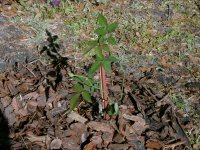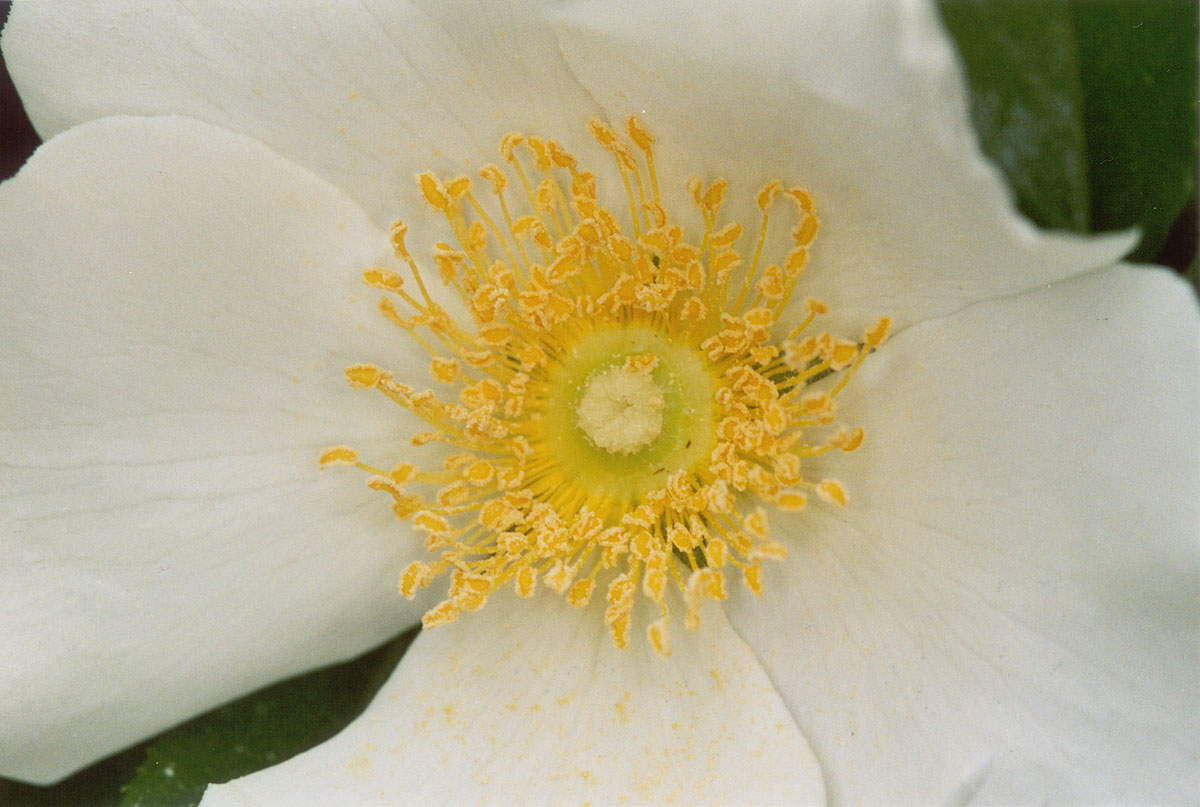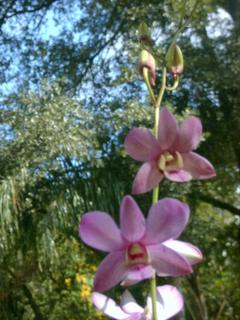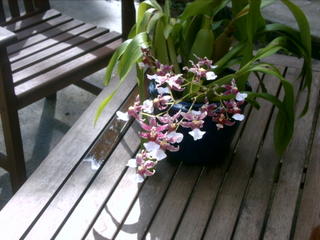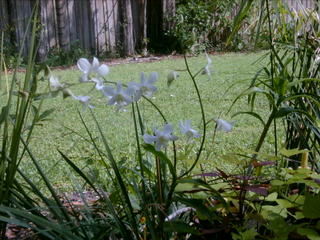A Cutting Garden for Floridaby Monica Brandies, Betty Mackey
A practical, precise, and unique book, essential for anyone trying to grow a floriferous garden in Central Florida's challenging climate... If you're not interested in cut flowers
per se, don't be put off -- the book is an excellent reference for growing any flowers in Central Florida.
Though the title says it's for Florida, in fact the authors are pretty upfront with their geographical focus: North Florida can use any gardening book published for the Deep South, so this book concentrates on gardening in Central and, to a lesser degree, South Florida.
A Cutting Garden is not the work of horticultural experts in the narrow sense, since neither of the authors is a professional landscaper or botanist. That's by no means a criticism: Sometimes you need the wise words of experienced lovers of green things. Add that to a pretty good ear for good gardening prose and enough exactitude to please without overwhelming, and Brandies and Mackey's book fills a real niche.
The level of specificity is this book's best attribute: To a degree I've never before encountered in a gardening book for Florida, "Cutting Garden" offers exact advice on when, where and what to plant in your garden to produce plenty of blooms. They begin the book with an excellent and efficient discussion of Florida's climactic and soil conditions before offering the the whys and hows of establishing a cutting garden, intelligently treating the installation of garden beds, mulching, frost insurance, pest control. Readers will find the best seasonal guide to planting I've found for Florida (with the exception of MacCubbin's
Month-by-month Gardening In Florida) and a fine section on starting plants from seeds and cutting.
Florida's humidity, heat and sun make growing Foxglove, Snapdragons, Delphinum, Stock, and many other traditional cutting flowers difficult. Mackey and Brandies advise planting many of these perennials as biennials, taking advantage of Central Florida's nearly frost-free climate to plant seedlings in November for blooms in February through June. Of course, since most of these plants aren't available in the nurseries around here, you'll have to start them as seeds. The book offers advice on specific cultivars and species, and even seed distributors.
A long chapter, the best of its kind for Florida, is devoted to bulbs that work in Central Florida's sandy, hot and nematode-prone soils. Many of these are hard-to-find or "old-fashioned" bulbs that have fallen out of favor: Sparaxis, Freesia, Camassia, Babiana, Watsonia and Tritonia. (They can be purchased through
easytogrowbulbs.com, which specializes in hot-climate bulbs.) Some bulbs are practically care-free: Spraxis and Watsonia, for instance, are essentially Gladiolus, bulbs that perform well here 10 months of the year. Some of the bulbs they recommend Ranunculus and (maybe) Oxalis will have to be dug out and stored. Frankly, many of these bulbs cost less than a dollar apiece when bought in quantity -- I plan to treat them like annuals and, if they come back next year, so much the better.
Especially strong is their concentration on atypical bulbs, perennials and annuals -- plants like Candytuft, Bells of Ireland, Sweet William Catchfly, Toadflax, Laurentia, Pot Marigolds, Shoo-fly Plants, and Love in a Mist. I haven't had a chance to try any of these, but I've bought the seeds at Thompson & Morgan and Parks Seeds and already started many of them. (See my
Garden Journal at Dave's Garden.)
Since this is a book devoted to cutting gardens, every flower entry has directions on how to cut and best preserve the flowers for long vase life. The last part of the book is devoted to a discussion of flower arranging -- not my thing, personally, but the advice is good.
Some minor gripes, and then I'll have to bring this review to a close: There's practically no discussion of the garden rose -- the best flower, for cutting or otherwise, here in Central Florida. The authors admit that roses should find their way into every garden, but offer little in the way of substantive advice on choice and cultivation. For that, you'll have to turn to Barbara Oehlbeck's quirky but excellent
For the Love of Roses in Florida and Elsewhere. Mackey and Brandies give short shrift to orchids, too, though they are fairly easy to grow here in Florida and make excellent cut flowers.
Finally, I haven't seen the latest edition of the book, but the second edition lacks photographs, illustrations amounting to a few sketches that aren't terribly useful. For pictures to go with the excellent text descriptions, you'll have to look on the web (
Dave's Garden is a great place to start) or in other books (
Florida Gardener's Guide by Georgia Tasker and Tom MacCubbin has the best, most useful illustrations for Florida flora that I've found).


